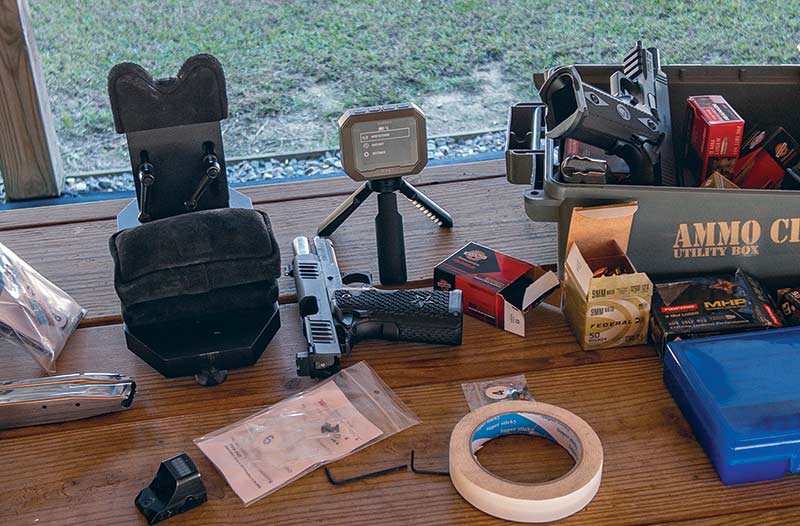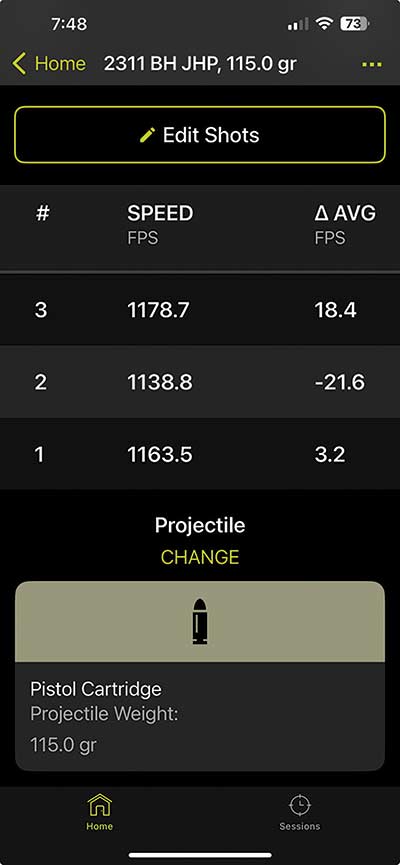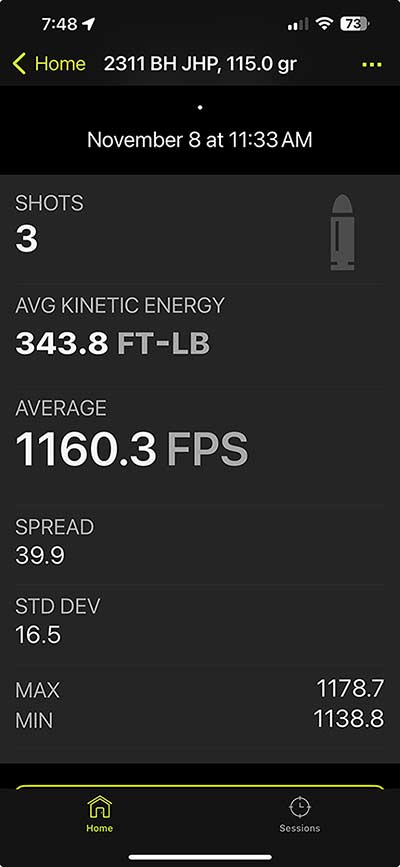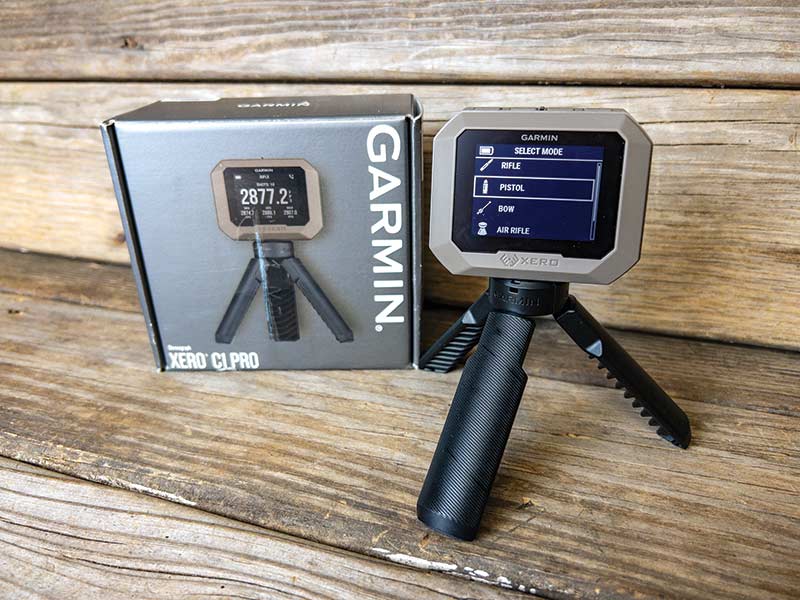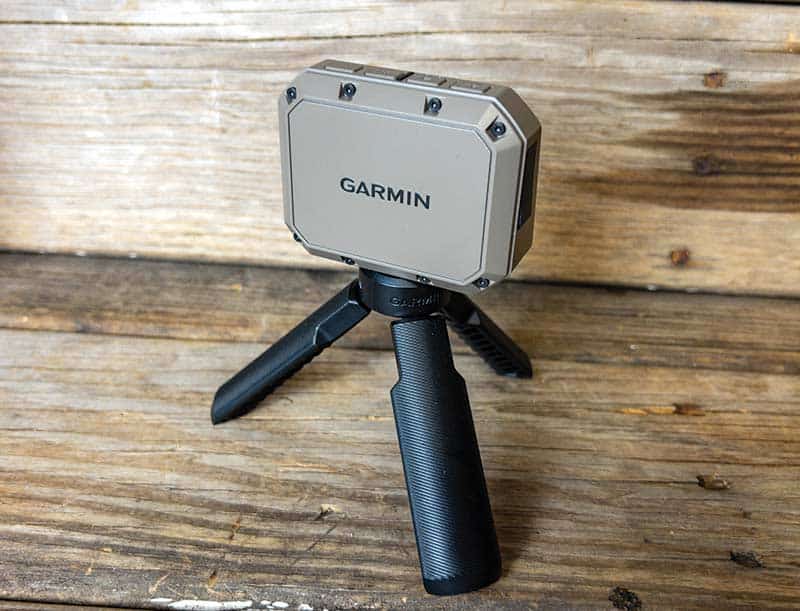Moore’s Law Meets Chronographs
Along, long time ago, in a galaxy right here, ballisticians, gun makers and ammo engineers used to measure the velocity of bullets using pen, paper and math. Remember, guns, in one form or another, have been around since the 15th century, give or take a century or two. I know Maestro Bartolomeo Beretta sold 185 harquebus barrels to the Venice Arsenal for the princely sum of 296 ducats way back in 1526, so I figure people have been pondering the question of projectile velocity for at least a few hundred years.
Figgerin’ Velocity
Back in the day, before electronics, computers and artificial intelligence, people had to resort to good old-fashioned legwork and math to figure out how fast things go. Big stuff, like trains, was comparatively easy. As long as you had calibrated clocks in both Houston and Santa Fe, you could agree on a start time with the guy at the destination end, send a steam locomotive on its way, and capture the time when the dusty passengers arrived. Simple math would provide at least an average miles-per-hour figure since by that time, we knew the two cities were about 878 miles apart. But what about things moving too fast to see and capture with clocks? Like bullets?
Physics to the rescue. The first “chronographs” made use of the ballistic pendulum concept and some simple physics equations. Momentum is mass times velocity, so if one could measure momentum by seeing how far a bullet could swing a piece of steel of known weight, one could work backward into the velocity number. Clever.
Another solution had a horizontal wheel spinning at a known and constant rate. A ring of paper sticking up around the edges provided a target. When shooting one side, the bullet would exit a little bit off-center on the opposite side. By knowing the speed and diameter of the wheel and measuring how far off-line the exit hole was, you could calculate the velocity.
The Modern Era
Then things got electronic and people started capturing electric signals when a bullet passed through something in the front and back, like an electric mesh. The electronics could tell you the elapsed time the bullet was between the two surfaces, and that, combined with the distance between the two panels, could be used to calculate velocity.
That’s basically where we are today. Most consumer-grade chronographs use optical sensors. The front one sees the shadow of the bullet flying overhead, and shortly thereafter, the back sensor sees a similar picture. The elapsed time between the two readings gives you what you need to figure out velocity.
For not much more than a hundred bucks, we can get our own lab gear to measure our bullets — a must for reloaders and shooting geeks like me. These systems generally work reliably and accurately. The only downside is they’ve got to be downrange, and you have to shoot “through” them, so to speak. Translation: Sooner or later, you or one of your range buddies will perforate the thing.
A New Paradigm
Back in my old career in the tech industry, we all bowed down and worshipped this concept called Moore’s Law. It said processing power would double approximately every 18 months. What it meant in practical terms is that every year, techie things would become way more powerful and much, much cheaper. My nephew just bought a new 52″ TV for $147. That’s Moore’s Law in action.
For shooters, it offers benefits, too, like the paradigm-changing Garmin Zero C1 Pro. This is also a “chronograph,” but it’s nothing at all like the ones most of us are used to. This one, roughly the size of a deck of cards, is a Doppler Radar unit that, from the shooting bench, watches your bullets fly downrange while recording velocity. No optics, no tripods and nothing to destroy on a bad day.
It’s not the first device using radar technology on the market, but boy, oh boy, does it change … everything.
The Details
When I said it was small, I wasn’t kidding. I compared it to a deck of cards, but I just held it up to my AirPods earbuds case, and they’re comparable in size. This thing is tiny and weighs next to nothing. You’ll displace no items from your shooting bag toting this around.
The Xero is a USB-rechargeable unit, so no batteries either. It has a built-in screen to show you results. Remember, it’s right on the bench, so you can easily read it from where you’re shooting. For best results, you pair the unit via Bluetooth with the Garmin companion app. That allows you to control the device, get software upgrades and store and share results from shooting sessions.
As you’d expect, the system allows you to input bullet weight so it can provide all the math, including energy, spreads and standard deviations.
Well? How’d It Do?
Remember the “this changes everything” observation earlier? Well, I stand by it. This unit takes the concept of “finicky” out back behind the barn and gives it a whoopin’. Without reading any instructions, I stuck it on the bench, kinda near my Ransom Multi-Caliber shooting rest, and pointed it more or less at the target. It started recording velocities immediately and didn’t miss a one. No careful alignment. No test shots. No adjustments. It. Just. Worked. Wow, consider me impressed.
About the “stick it on the bench” part, the Xero comes with a tripod, maybe 6″ tall, to facilitate the placement and aiming of the device. As I recall, the instructions I looked at later said to place the unit fairly close to the side of the muzzle. It was maybe 6″ from the shooting rest. If you’re shooting freehand, just rest your arms on the bench and I suspect it will work fine.
I’m accustomed to chronys missing readings, getting confused by nearby shooters, struggling with lighting conditions (try one indoors for a frustrating time) and losing track of certain bullets with polished jackets. Not this one. Radar eliminates most of that, and somehow, the Garmin engineers have made this unit really smart about figuring out which bullet is yours. I was at a public range, right next to another shooter, and while the unit would start to capture some of his shots, it would quickly recognize the difference and ignore his while waiting for mine.
A New Game
The Xero C1 Pro will handle anything from Airsoft to high-powered rifles. When you turn it on and select a new session, it’ll give you several choices to indicate what you’re shooting: Rifle, Pistol, Bow, Air Rifle and Other. Each selection covers a pretty broad velocity range, presumably to help the device know what to look for.
Gotta love the steady march of technology! The Xero retails for $599.99. For more info, visit Garmin.com.

